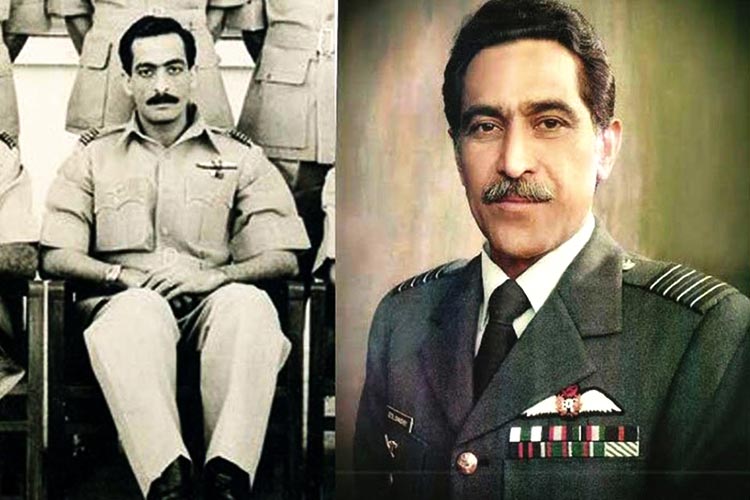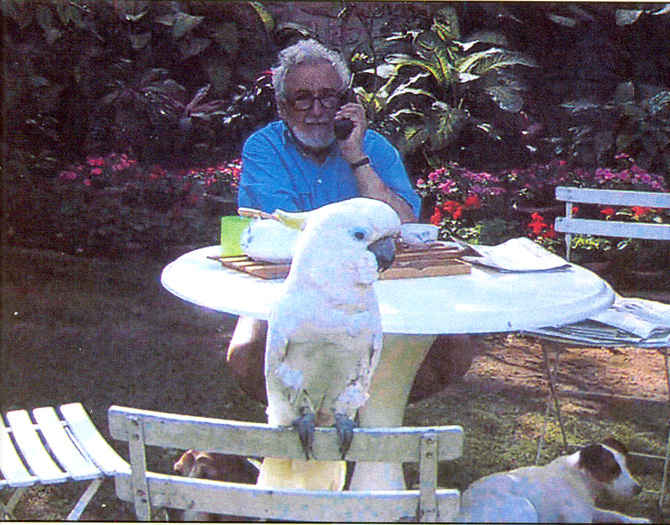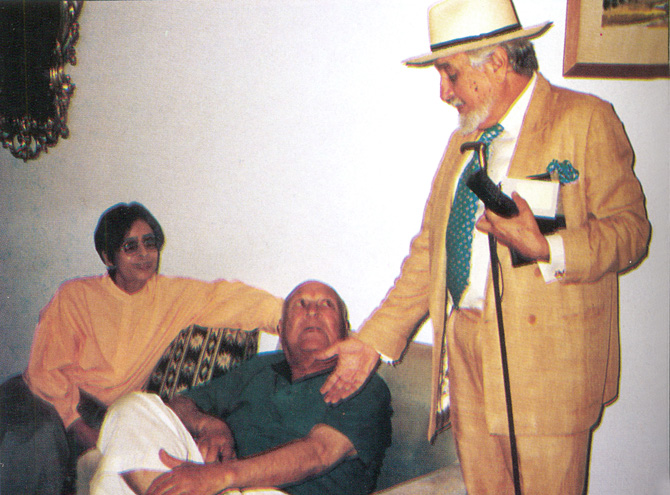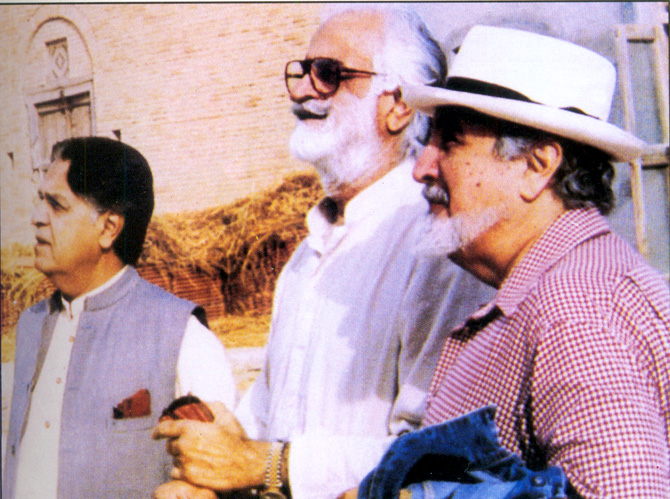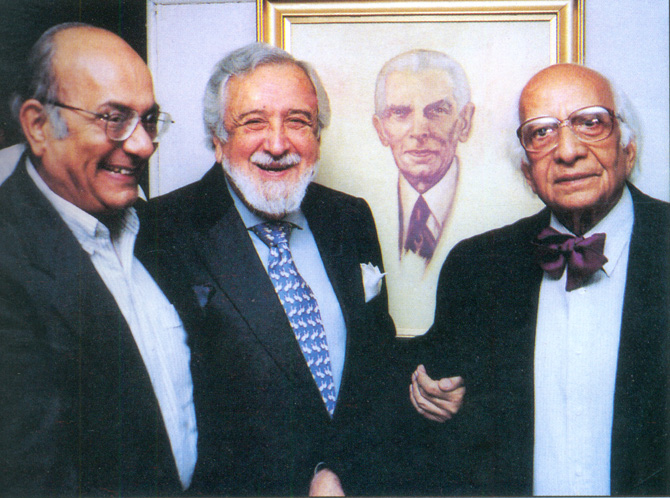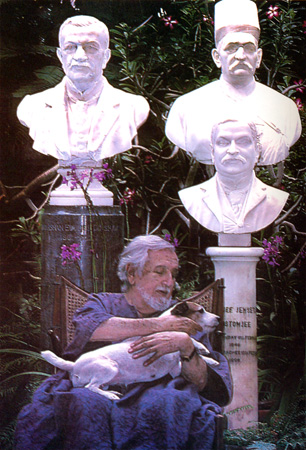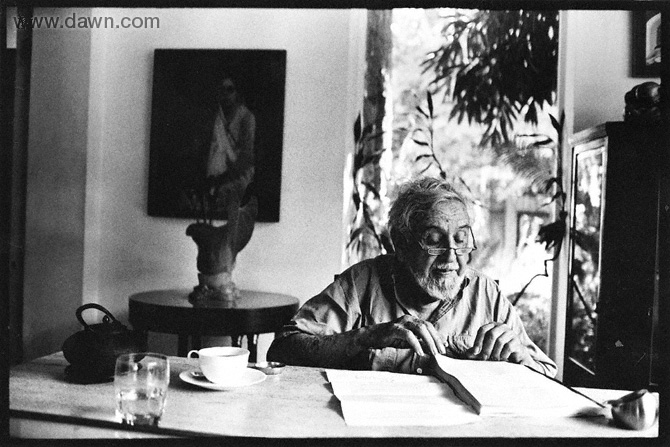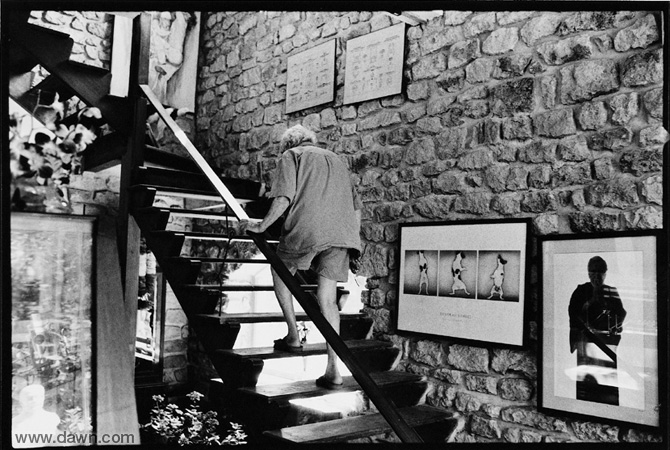ghazi52
PDF THINK TANK: ANALYST

- Joined
- Mar 21, 2007
- Messages
- 102,832
- Reaction score
- 106
- Country
- Location
Hal Bevan Petman
When Hal Bevan Petman looked at people, he really saw them. Arguably the best portrait painter who lived, painted and died in the Indian subcontinent, Petman left an indelible mark on those familiar with him and his work. His portraits exude an almost incandescent radiance, warranting more than a mere glance.
Henry Charles 'Hal' Bevan Petman, (1894-1980), was a British portrait painter who came to the Indian sub-continent in the 1920s, and made it his home.
Very few guys know this great Pakistani/British artist, he stayed through during the Partition of India and chose to reside in Pakistan, till his demise on 9 May 1980 in Rawalpindi. He painted significant civil and military personalities, landscapes and still life. His works included many Pakistan Army officers, two of whom became Pakistan's Heads of State: Field Marshal Ayub Khan and General Yahya Khan. He is buried in the Christian Graveyard in Rawalpindi, Pakistan.
Born in Barton Regis Rural District, Gloucestershire, England on 28 October 1894, to Bertram Amor Bevan-Petman (1870–1931) and Maria Minnie Bevan Petman (1869–1942), his family was of Anglo-Indian ancestry, and included prominent lawyers and judges who served at various eminent positions during the British Raj. He was educated at Clifton College, Bristol from 1908 to 1910 and resided through this period at North Town Boys House; and played cricket for the Clifton College XI at Lord's against Tonbridge in 1914. Bevan-Petman subsequently applied to and was accepted by Slade School of Fine Art in 1914, and received a two-year scholarship amounting to £35. This scholarship was then renewed in 1916. During this scholastic period he received the First Prize for Figure Painting and Figure Drawing. Furthermore, he was awarded certificates in Perspective, History of Art, Figure Drawing, and satisfied the requirements for a Diploma in Fine Art in History of Art (Painting in Spain and the Netherlands). He graduated from Slade School of Art in 1917 after being awarded a certificate in 'Painting from Life'.
Hal Bevan-Petman painted many landscapes during this era and on one occasion was commissioned by the India Tourism Office for a 'See India' poster. The mountain ranges of Kashmir appear frequently in his landscapes and are considered rare. During this time, he also taught a young Amrita Sher-Gil (1913 - 1941), who went on to become a talented Indian painter. He also had clients from Indian Royalty for whom he did portraits and the occasional risque renditions. This included the Nawab of Bahawalpur, who corresponded with Hal on a regular basis. Such commissions have remained very private,elusive and very rarely displayed. During his time in Pakistan he painted practically every notable personality and/or their spouses, ranging from Mohammad Ali Jinnah, the founder of Pakistan, various subsequent Presidents and Military Commanders. He was commissioned to paint military battle scenes which adorn the walls of various Pakistani Military Academic Institutions. He also painted several war heroes who were decorated posthumously with the Nishan-e-Haider, Pakistan's highest military award. One of the most celebrated amongst them is Major Raja Aziz Bhatti Shaheed.
He is known to have built a considerable reputation in the art scene and was commissioned by the Pakistan Army to paint many Generals, Commanders and Battle Scenes. Most of the portraits are held in Private Collections, and many adorn various Pakistan Army's Educational Institutions, Messes and Regimental Headquarters. The Ladies portraits of various socialites and influential personalities are considered romanticized renditions with almost hazily surreal backgrounds. Queen Elizabeth II was presented four paintings by the Government of Pakistan in 1961. These paintings are on display at Sandringham House and are part of the Royal Collection.
He died on 9 May 1980 and is buried in the Rawalpindi Christian Cemetery, flanked by the graves of his wife Beryl and sister-in-law, Eve Strauss née Dyer respectively.
Mr. Hal, in the sitting room of bungalow number 8 at the Rawalpindi Club in 1960's

When Hal Bevan Petman looked at people, he really saw them. Arguably the best portrait painter who lived, painted and died in the Indian subcontinent, Petman left an indelible mark on those familiar with him and his work. His portraits exude an almost incandescent radiance, warranting more than a mere glance.
Henry Charles 'Hal' Bevan Petman, (1894-1980), was a British portrait painter who came to the Indian sub-continent in the 1920s, and made it his home.
Very few guys know this great Pakistani/British artist, he stayed through during the Partition of India and chose to reside in Pakistan, till his demise on 9 May 1980 in Rawalpindi. He painted significant civil and military personalities, landscapes and still life. His works included many Pakistan Army officers, two of whom became Pakistan's Heads of State: Field Marshal Ayub Khan and General Yahya Khan. He is buried in the Christian Graveyard in Rawalpindi, Pakistan.
Born in Barton Regis Rural District, Gloucestershire, England on 28 October 1894, to Bertram Amor Bevan-Petman (1870–1931) and Maria Minnie Bevan Petman (1869–1942), his family was of Anglo-Indian ancestry, and included prominent lawyers and judges who served at various eminent positions during the British Raj. He was educated at Clifton College, Bristol from 1908 to 1910 and resided through this period at North Town Boys House; and played cricket for the Clifton College XI at Lord's against Tonbridge in 1914. Bevan-Petman subsequently applied to and was accepted by Slade School of Fine Art in 1914, and received a two-year scholarship amounting to £35. This scholarship was then renewed in 1916. During this scholastic period he received the First Prize for Figure Painting and Figure Drawing. Furthermore, he was awarded certificates in Perspective, History of Art, Figure Drawing, and satisfied the requirements for a Diploma in Fine Art in History of Art (Painting in Spain and the Netherlands). He graduated from Slade School of Art in 1917 after being awarded a certificate in 'Painting from Life'.
Hal Bevan-Petman painted many landscapes during this era and on one occasion was commissioned by the India Tourism Office for a 'See India' poster. The mountain ranges of Kashmir appear frequently in his landscapes and are considered rare. During this time, he also taught a young Amrita Sher-Gil (1913 - 1941), who went on to become a talented Indian painter. He also had clients from Indian Royalty for whom he did portraits and the occasional risque renditions. This included the Nawab of Bahawalpur, who corresponded with Hal on a regular basis. Such commissions have remained very private,elusive and very rarely displayed. During his time in Pakistan he painted practically every notable personality and/or their spouses, ranging from Mohammad Ali Jinnah, the founder of Pakistan, various subsequent Presidents and Military Commanders. He was commissioned to paint military battle scenes which adorn the walls of various Pakistani Military Academic Institutions. He also painted several war heroes who were decorated posthumously with the Nishan-e-Haider, Pakistan's highest military award. One of the most celebrated amongst them is Major Raja Aziz Bhatti Shaheed.
He is known to have built a considerable reputation in the art scene and was commissioned by the Pakistan Army to paint many Generals, Commanders and Battle Scenes. Most of the portraits are held in Private Collections, and many adorn various Pakistan Army's Educational Institutions, Messes and Regimental Headquarters. The Ladies portraits of various socialites and influential personalities are considered romanticized renditions with almost hazily surreal backgrounds. Queen Elizabeth II was presented four paintings by the Government of Pakistan in 1961. These paintings are on display at Sandringham House and are part of the Royal Collection.
He died on 9 May 1980 and is buried in the Rawalpindi Christian Cemetery, flanked by the graves of his wife Beryl and sister-in-law, Eve Strauss née Dyer respectively.
Mr. Hal, in the sitting room of bungalow number 8 at the Rawalpindi Club in 1960's






